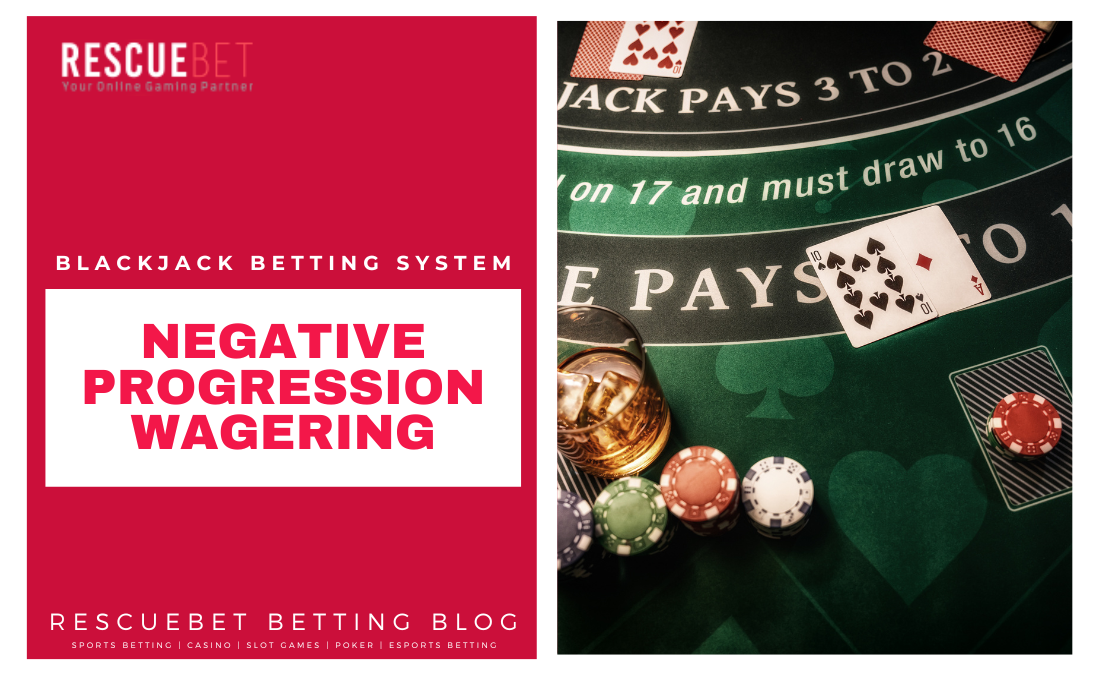A negative progression wagering system works opposite to a positive, progressive wagering system. The negative progression wagering system requires a punter to increase a wager after a loss and decrease a bet after a win. A punter is incentivized to increase their chance after a loss to make up for past failures, which effectively puts a punter at par after a nasty streak. Negative progression also incentivizes a punter to decrease their stake after a win, thereby securing a portion of the winnings after each successive win. A negative progression wagering strategy can be extremely harmful if a punter doesn’t execute the plan correctly or at the wrong time.
Features Of Negative Progression
Some of the features of negative progression in blackjack wagering include the impact of accumulating losses, how losses get magnified, lower increments during winning streaks, dependent on past outcomes, and bankroll funds.
1. Losses Accumulate
A punter must increase their wager after a loss to recoup past losses for a negative progression strategy to work. But, one disadvantage of a negative progression strategy is the accumulation of losses. Losses accumulate because a punter increases their stake following a loss, and risk increased losses should another loss follow. Depending on a punter’s rate of increments, a punter’s losses can accumulate. Losses can be worse during successive streaks. For example, a punter selects a progression rate of 5% with a bankroll of $1000. Suppose the punter loses their $50-first wager, then the punter places a chance of $57.5 on the next bet, and so on. A punter can also select a fixed or progressive incremental rate.
2. Magnified Losses
Losses are magnified depending on the total rate a punter selects. For example, if a punter picks a higher incremental rate, they continue to decrease their wager by high margins after a win. Consequently, a punter increases their bet by a significant proportion following a loss, resulting in magnified losses. Magnified losses can dig a punter into a short pile of debt before they even have a chance to recoup any losses. Suppose a punter sets a 50% rate and wagers $100 as the first wager. Five successive losses can result in magnified losses of $1825, bankrupting a punter. A punter must also select reasonable negative progressive and incremental rates.
3. Lower Increments During Winning Streaks
A negative progression wagering strategy fails to capitalize on winning streaks because of lower increments or decreasing a stake after a win. However, a punter can recoup all previous losses with a single win if a punter has sufficient funds. For example, if a punter wagers $100 and wins their first wager, the next wager placed will be under $100 and continue to decrease until the punter loses a hand. After a punter loses a hand, they’re required to increase their next wager to make up for past losses. Essentially, it’s a strategy with increasing losses and decreasing gains.
4. Dependent On Past Outcomes
It works on the premise that if an outcome has already occurred, the probability of it happening again is low, i.e., wins are followed by losses, and victories generally follow losses. While this premise holds in the long run, a punter must also be skilled to succeed in a blackjack game. It’s hard for a punter to predict how the next hand will play out irrespective of how the current hand plays out.
5. Bankroll Funds
A negative progression strategy works only if a punter has deep pockets or unlimited betting funds. However, no punter has total betting funds, and a series of progressive losses prevents a punter from winning their funds back if they run out of funds before they can play a winning hand of blackjack.
Setting limited targets is one way to minimize the risk of not possessing unlimited funds. If an upper or lower target is achieved (50% profit or 40% loss), a punter can quit the current round before starting the next wager from the original bet rate. In a way, a punter resets their progress, preventing them from chasing excessive losses and securing the most funds possible.
























